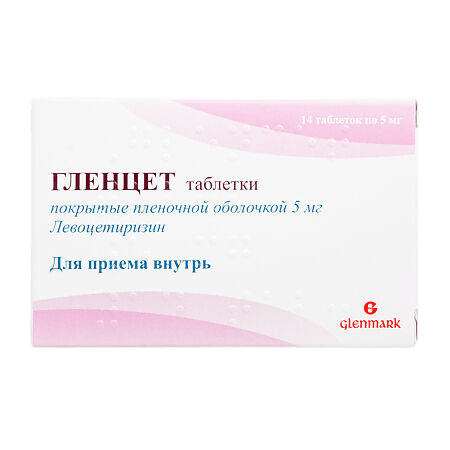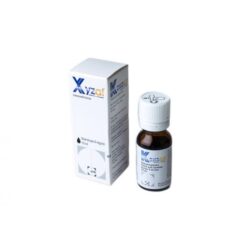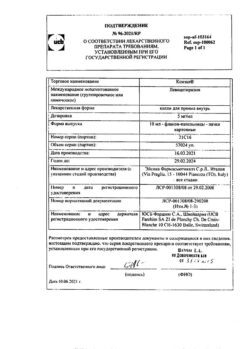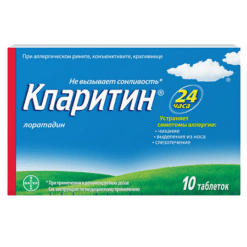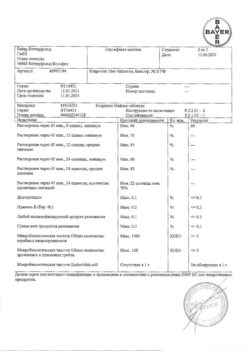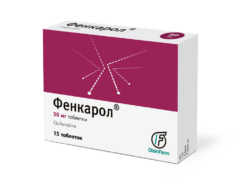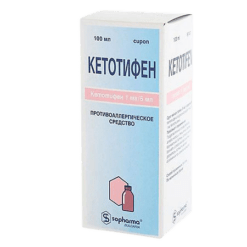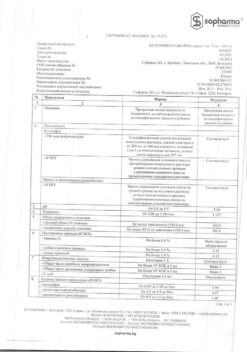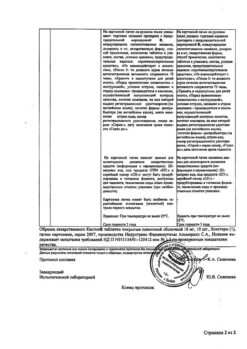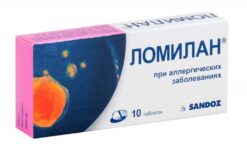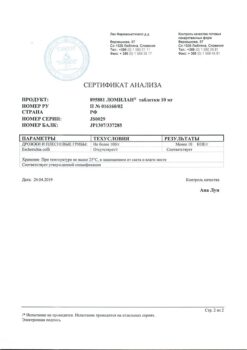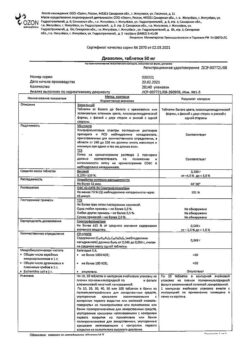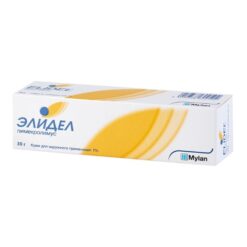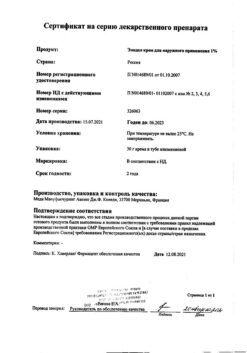No products in the cart.
Description
Levocetirizine is an enantiomer of cetirizine, a competitive histamine antagonist, blocks H1 -histamine receptors, the affinity for which is 2 times higher than for cetirizine. It influences the histamine-dependent stage of allergic reactions, decreases eosinophils migration, vascular permeability and limits the release of inflammatory mediators.
It prevents and facilitates allergic reactions, produces antiexudative and antipruritic action, practically has no anticholinergic and antiserotonin action. Its action begins 12 min after a single dose in 50% of patients, in 1 hour – in 95% of patients and lasts for 24 hours.
Pharmacokinetics
Pharmacokinetics is linear. It is quickly absorbed when administered orally; eating has no effect on the completeness of absorption, but reduces its rate.
Bioavailability is 100%. Time of maximum concentration achievement in blood (TCmax) – 0.9 h, maximum concentration in blood (Cmax) – 207 ng/ml. The volume of distribution is -0.4 l/kg. Binding to plasma proteins – 90%. Less than 14% of the drug is metabolized in the liver through O-dealkylation to form pharmacologically inactive metabolite.
Half-life period (T1/2) – 7-10 hours. Total clearance is 0.63 ml/min/kg. It is completely eliminated from the body within 96 hours. Excreted by the kidneys (85.4%). In renal insufficiency (creatine clearance (CK) is less than 40 ml/min) clearance is decreased (in patients on hemodialysis – by 80%), T1/2 is prolonged. Less than 10% is removed during hemodialysis. It penetrates into breast milk.
Indications
Indications
Active ingredient
Active ingredient
Composition
Composition
Active ingredient:
levocetirizine dihydrochloride 5 mg
Excipients:
lactose monohydrate (Tabletose 100)
microcrystalline cellulose (Avicel PH 112)
/p>
colloidal silicon dioxide (Aerosil 200)
magnesium stearate
opadray white
How to take, the dosage
How to take, the dosage
Overly, with meals or on an empty stomach, with a small amount of water, without chewing.
The recommended dosage for adults and children over 6 years of age, and for elderly patients (if renal function is normal) is 5 mg (1 tablet) once daily.
In patients with chronic renal failure, the dose is reduced 2-fold (1 tablet every other day) in patients with a CK of 30 to 49 ml/min and 3-fold (1 tablet every 3 days) in patients with a CK of 10 to 29 ml/min.
Patients with hepatic impairment do not require dosing adjustments.
The course of treatment in chronic diseases is up to 18 months.
Interaction
Interaction
Theophylline (400 mg/day) decreases total clearance of levocetirizine by 16%, while the kinetics of theophylline is not changed.
The co-administration with macrolides or ketoconazole did not cause significant changes in ECG.
It may increase the effect of CNS depressants and ethanol.
Special Instructions
Special Instructions
Caution is required for concomitant use with alcohol (see Interaction with other medicinal products).
Influence on driving and operating ability No effect of the drug on driving and operating ability has been reliably observed in objective assessment when taken in the recommended dose.
Even so, during the period of taking the drug it is advisable to refrain from potentially hazardous activities requiring increased concentration and quick psychomotor reactions.
Contraindications
Contraindications
Hypersensitivity (including to piperazine derivatives), severe chronic renal failure (CKD, IQ less than 10 ml/min), pregnancy, lactation, children under 6 years.
Galactose intolerance, lactase deficiency and glucose-galactose malabsorption.
With caution
Chronic renal failure (dosing regimen adjustment required), advanced age (decreased glomerular filtration is possible).
Side effects
Side effects
Overdose
Overdose
Pregnancy use
Pregnancy use
The drug is contraindicated in pregnancy and lactation.
Similarities
Similarities
Additional information
| Shelf life | 3 years. |
|---|---|
| Conditions of storage | In a dry, light-protected place at a temperature not exceeding 30 °C. |
| Manufacturer | Glenmark Pharmaceuticals Ltd, India |
| Medication form | pills |
| Brand | Glenmark Pharmaceuticals Ltd |
Related products
Buy Glencet, 5 mg 14 pcs with delivery to USA, UK, Europe and over 120 other countries.

